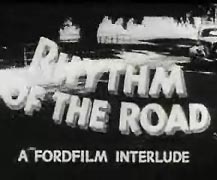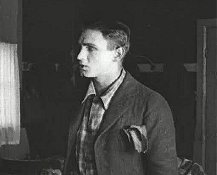50th Anniversary Interstate Highway System - Video Gallery
Road Films
Motion pictures have frequently portrayed the American highway as well as the allure of the open road. Many of these were produced by the Bureau of Public Roads—the predecessor to the Federal Highway Administration.
Some of these programs require the use of a multimedia player. Free versions of the Real Media Player and Windows Media Player are available for download.

|
Rhythm of the Road (1937)The automobile symbolized freedom to many early car owners. For the first time, it was possible to travel great distances with little thought of schedules or timetables. If the roads were primitive by today's standards, there was the sheer joy of experiencing the world from the vantage point of a moving automobile. This British short film was created to promote the many pleasures of car ownership. The jaunty title song captures perfectly the allure of the open road: "The sun's in the sky--a heaven of blue. The world flashes by, you feel so happy!" (4 minutes) |

|
The Road to Happiness (1924)The U.S. Bureau of Public Roads (BPR) had an important educational role. The agency created reports, films, exhibits, and other material to promote the value of good roads and the techniques for building them. One such effort was The Road to Happiness, a silent film that was produced by the Ford Motor Company in cooperation with the BPR, the Highway Education Board, and the National Automobile Chamber of Commerce. The film tells the story of Bob Preston, a farm boy who enters a good roads essay contest. Bob bases his essay on a saying of Thomas H. MacDonald, who headed the BPR from 1919 to 1953: "So I say that we pay for improved roads whether we have them or not and we pay less if we have them than if we have not." Bob's essay wins a four-year college scholarship. With his engineering degree, Bob begins to put in practice what he has learned. The Road to Happiness was shot in northern Virginia, mostly with area residents. Thomas H. MacDonald plays himself, as does President Calvin Coolidge. The film was a popular feature of good roads conventions and other public events in the mid-1920s. (31 minutes) |
The Road to Prosperity (circa 1961)Soon after the Federal-Aid Highway Act of 1956 launched construction of the Interstate System, the program was criticized for displacing homes and businesses, harming cities, and growing costs amid allegations of waste, fraud, and abuse. Calls for an end to the program were heard in the press and Congress. To counter these criticisms, the U.S. Bureau of Public Road launched a public relations campaign in the early 1960s that included films such as “Road to Prosperity,” which was intended to be shown to pro-highway groups, civic organizations, schools, and other interested parties. By focusing on how the program affected Kansas City, the 14-minute film highlighted the benefits the BPR believed the Nation would receive when the Interstate System was completed. Although amateurish in some respects, the film is an interesting period piece when seen with the hindsight available to viewers in the 21st century. (14 minutes) |

